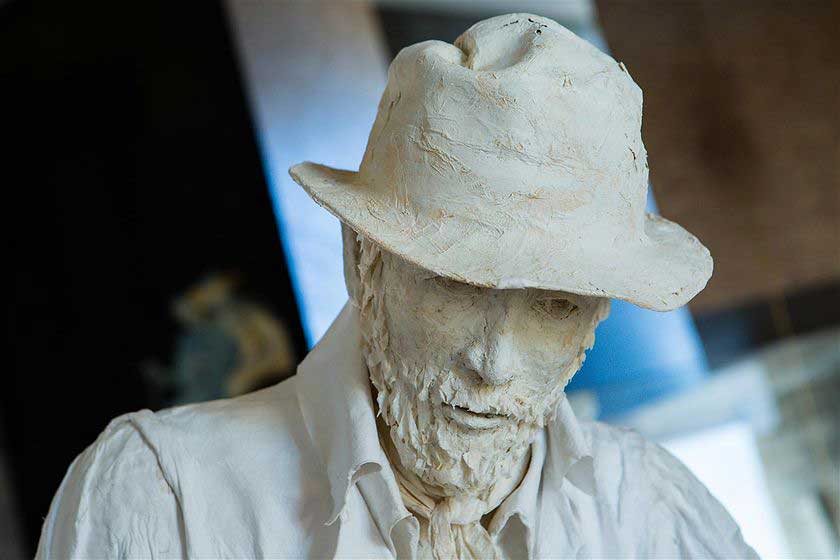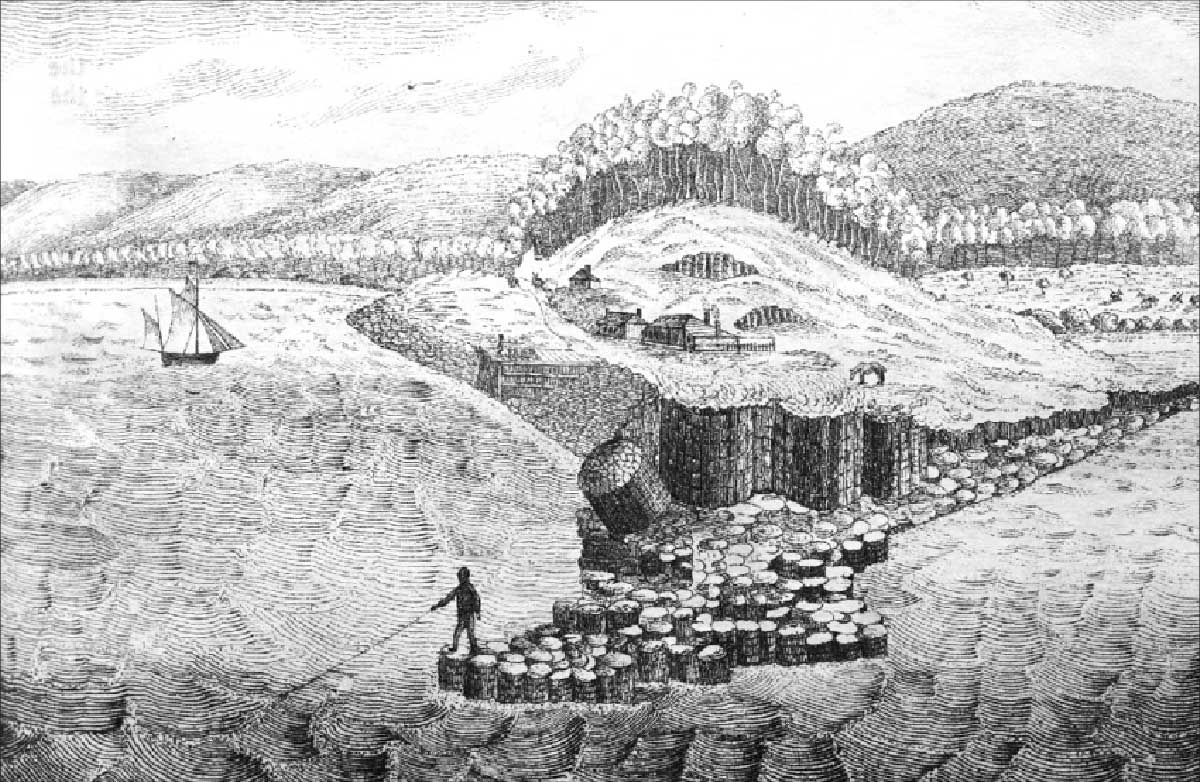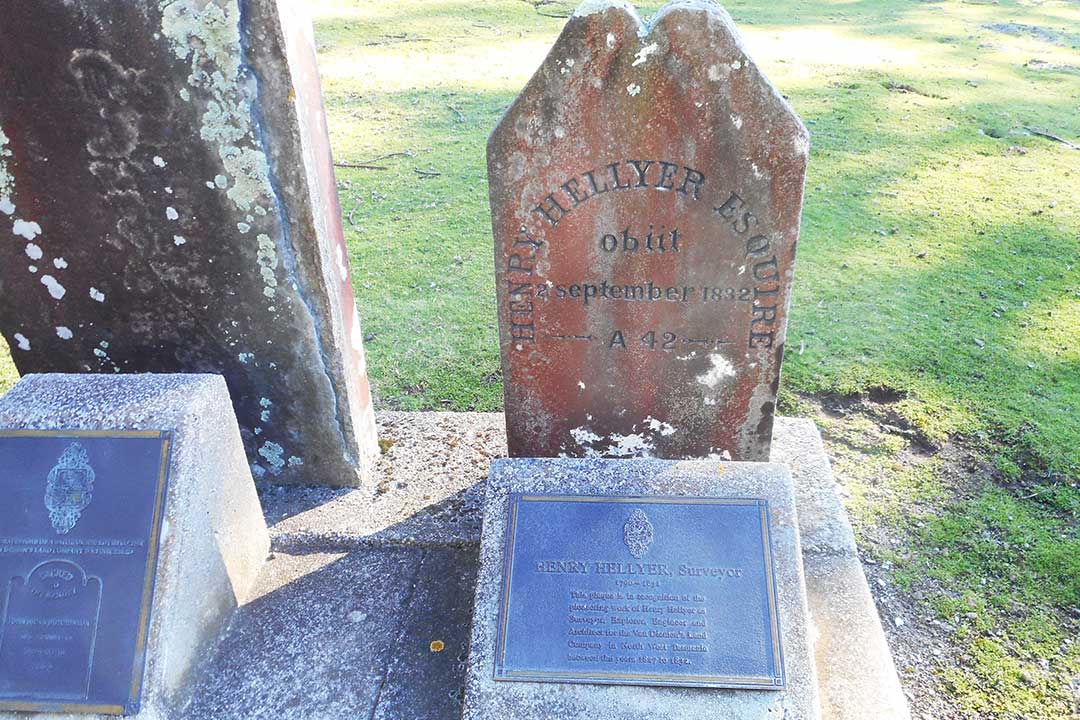Henry Hellyer

Sculpture of North West pioneer Henry Hellyer, by Pam Thorne.
in creating the sculpture, she was relieved to discover there wasn't a surviving image of explorer Henry Hellyer, and says it gave her the freedom to make him a bit handsome, if a little troubled. The only painting of him was produced by Casey McGrath who worked from written descriptions and from researching his family and observing family likeness. The sculpture of Henry Hellyer was commissioned by the Burnie Regional Museum.
Henry Hellyer (1790–1832), explorer and surveyor, was one of the first officers of the Van Diemen's Land Company, the principal explorer of north-western Tasmania, and a major founder of Burnie. Henry was the second son of eleven children of John Hellyer and Betsy Maine of Portchester, Hampshire, England. Nothing is known about his early life or where he was trained as an architect and surveyor, but it seems that the family were able to afford to educate their children well. His older brother William Varlo Hellyer was a lawyer in London and Secretary of the Royal Institution in 1841. A copy of a letter written by Henry in 1830 to William Varlo's wife, Mary Vuliamy was deposited by a Canadian descendant of William and Mary in the Hellyer Regional Library in Burnie, Tasmania. Henry himself had no direct descendants.
When the Van Dieman's Land Company was formed, Henry was one of the first to sign on, utilising his skills to transform the land of north west Tasmania. Hellyer arrived in Van Diemen's Land in his mid 30s on 4 March 1826 in the Cape Packet with other officers of the newly-formed Van Diemen's Land Co. A month later Hellyer, with the other surveyors, made the first of many exploratory trips into the hinterland of Tasmania's north-west, where the company had been promised a grant of 250,000 acres (101,173 ha). During his time as the Compamy's Chief Architect and surveyor, he named Valentine`s Peak, designed the now-historic "Highfield House" in Stanley and, most importantly, under the most arduous of conditions, he made the first road through the dense bushland that one covered Tasmania's North-West.

Drawing by Henry Hellyer of the settlement at Emu Bay, 1831, which later became the City of Burnie. The sketch depicts the forest through which he built a track to reach Surrey Hills from the coast and the distinctive bassalt columns on the Blackmans Point headland that would later be quarried. Source: Ross, The Van Diemen's Land anniversary and Hobart-Town almanack for the year 1831.
Hellyer's dream was to link the remote inland settlements with the growing coastal town of Emu Bay, known today as Burnie. Local legend has it that with little more than a bullock gang and crude hand tools he carved his way through the dense forest into the wild hills. His road was a success and subsequently named after him.
He journeyed along the north coast between Port Sorell and Cape Grim, down the west coast to the Pieman River, and into the mountainous areas. Hellyer ascended Black Buff, walked to Cradle Mountain, and penetrated as far south as the Murchison River.
Hellyer climbed St Valentine's Peak and was impressed with grassed plains which he called the Surrey and Hampshire Hills. As a result, the Company selected a huge block extending from Emu Bay south beyond St Valentine's Peak, with its base camp on the site of Burnie.

Henry Hellyer's gravestone in the Stanley Cemetery
But the physical hardships he endured appeared to be nothing compared to the emotional turmoil occurring inside Henry Hellyer’s mind. Hellyer believed he had found good grazing land further north, around Surrey Hills. However, he was wrong: and the Van Diemen’s Land Company incurred great cost attempting to raise sheep and cattle there, and they perished in the winter. In 1832, after a very cold winter, Surrey Hills was “becoming the graves of all the sheep”. Hellyer tried to defend himself; he became oversensitive to criticism; he retreated into himself; and melancholy began to consume him.
There was also a malicious rumour of some kind spread by a convict servant by the name of Harley, who had worked under Hellyer’s supervision previously. Harley had allegedly been a poor worker and was not paid upon the completion of the job. The slander may have been that Hellyer was a homosexual. In the early hours of September 2, 1832, Henry Hellyer committed suicide.
Related Links
The Van Diemen's Land Company >
Henry Helleyer: Australian Dictionary of Biogaphy >
Henry Hellyer: Forty South Tasmania >
Henry Hellyer, In His Footsteps >
